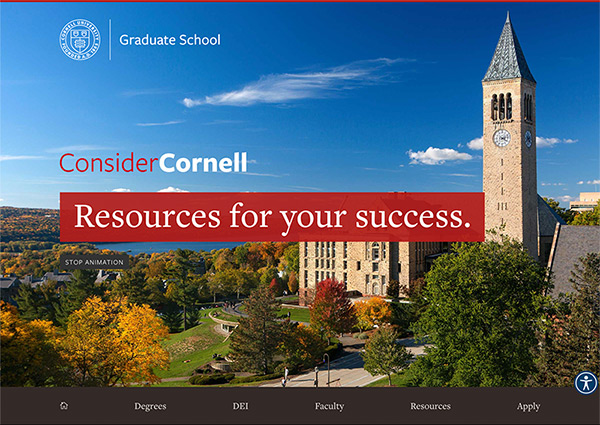Understanding the Field Structure
At Cornell, graduate study is organized using a field structure. Fields are composed of faculty members from a number of departments who come together around a shared intellectual interest and may draw from different campuses or colleges. Graduate students are admitted to fields of study. Within each field, they select major and minor subjects, which are research interests or concentrations.
Fields span departments and even disciplines. It’s possible for a student in the field of economics to include faculty on his or her special committee from industrial and labor relations, civil and environmental engineering, and sociology, along with the more traditional economics and management.
For example, the graduate field of economics includes faculty from:
- public policy (School of Public Policy)
- applied economics and management (College of Agriculture & Life Sciences)
- industrial and labor relations (School of Industrial and Labor Relations)
- management (Johnson Graduate School of Management)
- civil and environmental engineering (College of Engineering)
- sociology (College of Arts & Sciences)
- economics (College of Arts & Sciences)
Download the complete Graduate School Fields, Concentrations, and Subjects (PDF). The content of this PDF is available as accessible web content on our Field of Study search.
Some professional degrees are administered directly by the fields. For example, the master of architecture is administered by the College of Architecture, Art, and Planning.


